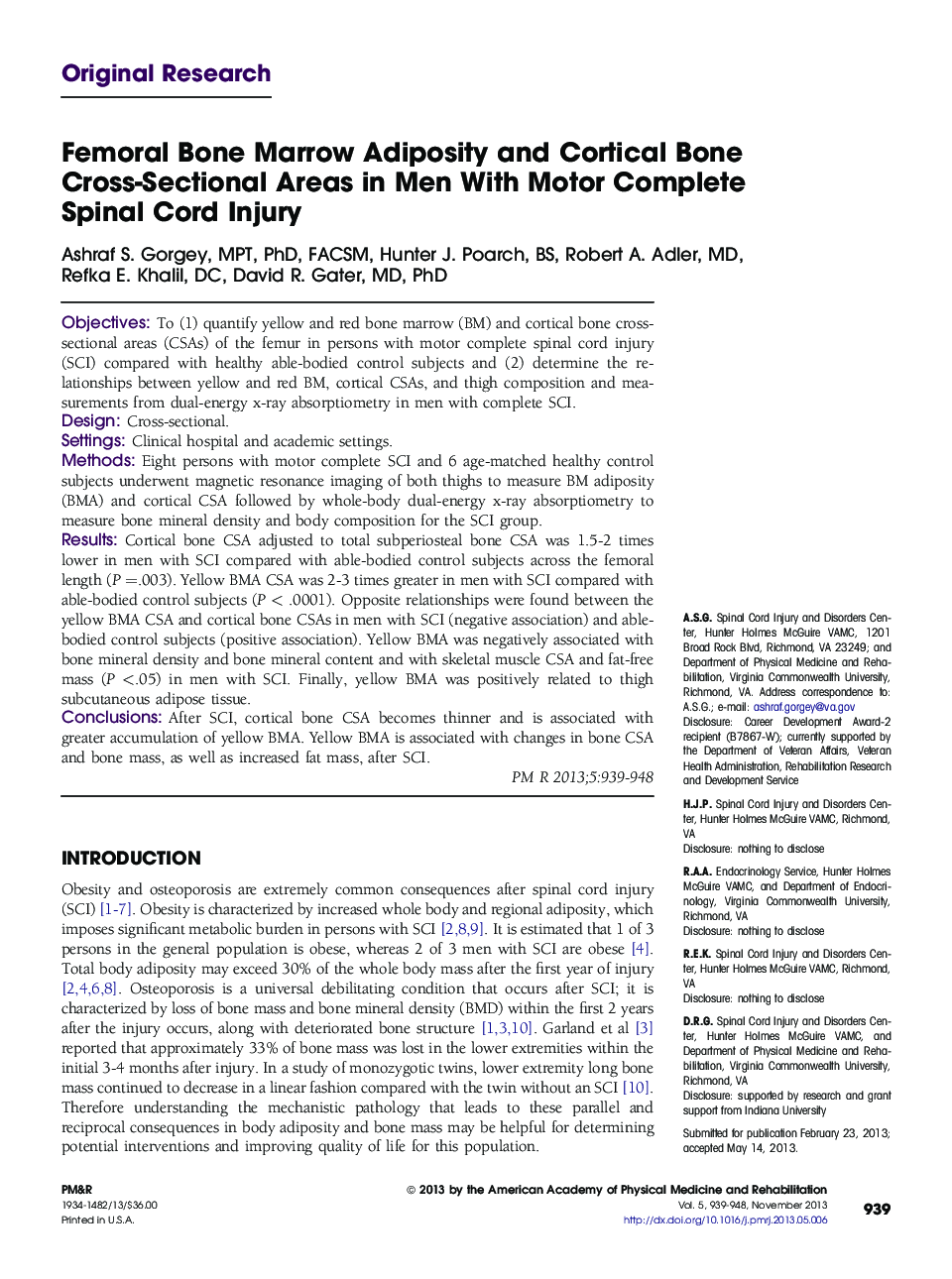| Article ID | Journal | Published Year | Pages | File Type |
|---|---|---|---|---|
| 2705638 | PM&R | 2013 | 10 Pages |
ObjectivesTo (1) quantify yellow and red bone marrow (BM) and cortical bone cross-sectional areas (CSAs) of the femur in persons with motor complete spinal cord injury (SCI) compared with healthy able-bodied control subjects and (2) determine the relationships between yellow and red BM, cortical CSAs, and thigh composition and measurements from dual-energy x-ray absorptiometry in men with complete SCI.DesignCross-sectional.SettingsClinical hospital and academic settings.MethodsEight persons with motor complete SCI and 6 age-matched healthy control subjects underwent magnetic resonance imaging of both thighs to measure BM adiposity (BMA) and cortical CSA followed by whole-body dual-energy x-ray absorptiometry to measure bone mineral density and body composition for the SCI group.ResultsCortical bone CSA adjusted to total subperiosteal bone CSA was 1.5-2 times lower in men with SCI compared with able-bodied control subjects across the femoral length (P =.003). Yellow BMA CSA was 2-3 times greater in men with SCI compared with able-bodied control subjects (P < .0001). Opposite relationships were found between the yellow BMA CSA and cortical bone CSAs in men with SCI (negative association) and able-bodied control subjects (positive association). Yellow BMA was negatively associated with bone mineral density and bone mineral content and with skeletal muscle CSA and fat-free mass (P <.05) in men with SCI. Finally, yellow BMA was positively related to thigh subcutaneous adipose tissue.ConclusionsAfter SCI, cortical bone CSA becomes thinner and is associated with greater accumulation of yellow BMA. Yellow BMA is associated with changes in bone CSA and bone mass, as well as increased fat mass, after SCI.
